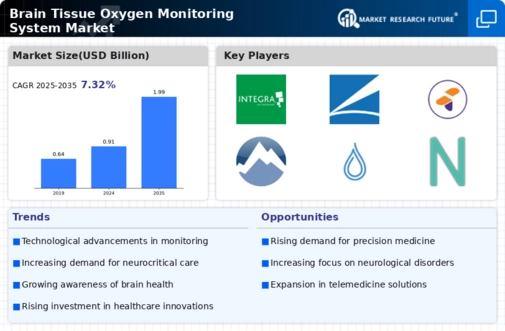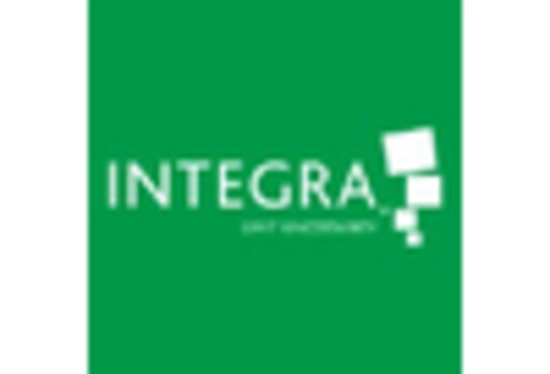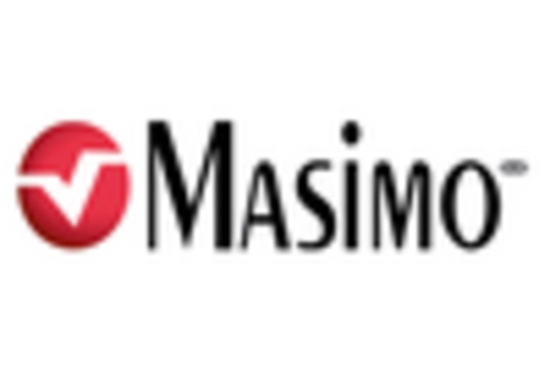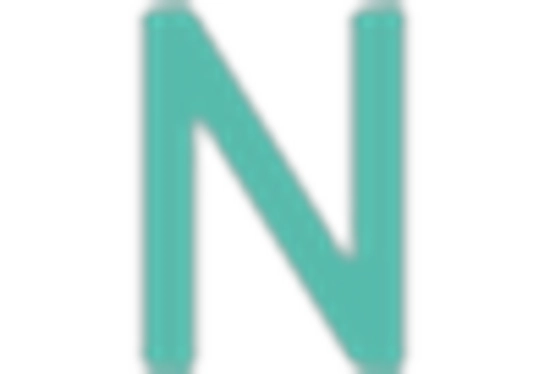Growing Awareness of Brain Health
There is a growing awareness regarding the importance of brain health, which is influencing the Brain Tissue Oxygen Monitoring System Market. Public health campaigns and educational initiatives are emphasizing the need for early detection and management of brain-related conditions. This heightened awareness is leading to increased demand for monitoring systems that can provide real-time data on brain oxygen levels. Healthcare providers are recognizing the value of these systems in improving patient care and outcomes. Furthermore, as more patients and families become informed about the benefits of brain monitoring, the market is expected to expand. This trend indicates a shift towards proactive healthcare approaches, which could significantly enhance the adoption of brain tissue oxygen monitoring technologies.
Rising Incidence of Neurological Disorders
The increasing prevalence of neurological disorders, such as traumatic brain injury and stroke, is a key driver for the Brain Tissue Oxygen Monitoring System Market. As the global population ages, the incidence of these conditions is expected to rise, leading to a greater demand for advanced monitoring systems. According to recent data, neurological disorders account for a significant portion of global morbidity and mortality, necessitating effective management strategies. The ability to monitor brain tissue oxygen levels in real-time can provide critical insights into patient conditions, thereby improving outcomes. This trend suggests that healthcare providers are likely to invest more in brain monitoring technologies, further propelling the growth of the Brain Tissue Oxygen Monitoring System Market.
Technological Innovations in Monitoring Systems
Technological advancements in medical devices are transforming the Brain Tissue Oxygen Monitoring System Market. Innovations such as non-invasive monitoring techniques and portable devices are enhancing the accessibility and usability of these systems. For instance, the development of advanced sensors and data analytics tools allows for more accurate and timely assessments of brain oxygenation levels. This is particularly crucial in critical care settings, where rapid decision-making can significantly impact patient outcomes. The market is witnessing a surge in research and development activities aimed at improving the efficacy and reliability of monitoring systems. As a result, healthcare facilities are increasingly adopting these technologies, which is likely to drive the growth of the Brain Tissue Oxygen Monitoring System Market.
Increased Investment in Healthcare Infrastructure
Investment in healthcare infrastructure is a significant driver for the Brain Tissue Oxygen Monitoring System Market. Governments and private entities are allocating substantial resources to enhance healthcare facilities, particularly in regions with high incidences of neurological disorders. This investment is aimed at upgrading medical equipment and technologies, including brain monitoring systems. Enhanced healthcare infrastructure not only improves access to advanced medical technologies but also fosters an environment conducive to research and development. As healthcare facilities modernize, the demand for sophisticated monitoring systems is likely to increase, thereby propelling the growth of the Brain Tissue Oxygen Monitoring System Market. This trend suggests a long-term commitment to improving patient care and outcomes through technological advancements.
Regulatory Support for Advanced Medical Technologies
Regulatory bodies are increasingly supporting the development and adoption of advanced medical technologies, which is beneficial for the Brain Tissue Oxygen Monitoring System Market. Streamlined approval processes and favorable regulations are encouraging manufacturers to innovate and bring new products to market. This regulatory support is crucial for ensuring that healthcare providers have access to the latest monitoring technologies that can enhance patient care. As regulations evolve to accommodate new technologies, the market is likely to see an influx of innovative brain monitoring solutions. This trend indicates a positive outlook for the Brain Tissue Oxygen Monitoring System Market, as regulatory frameworks adapt to support advancements that improve patient outcomes.


















Leave a Comment